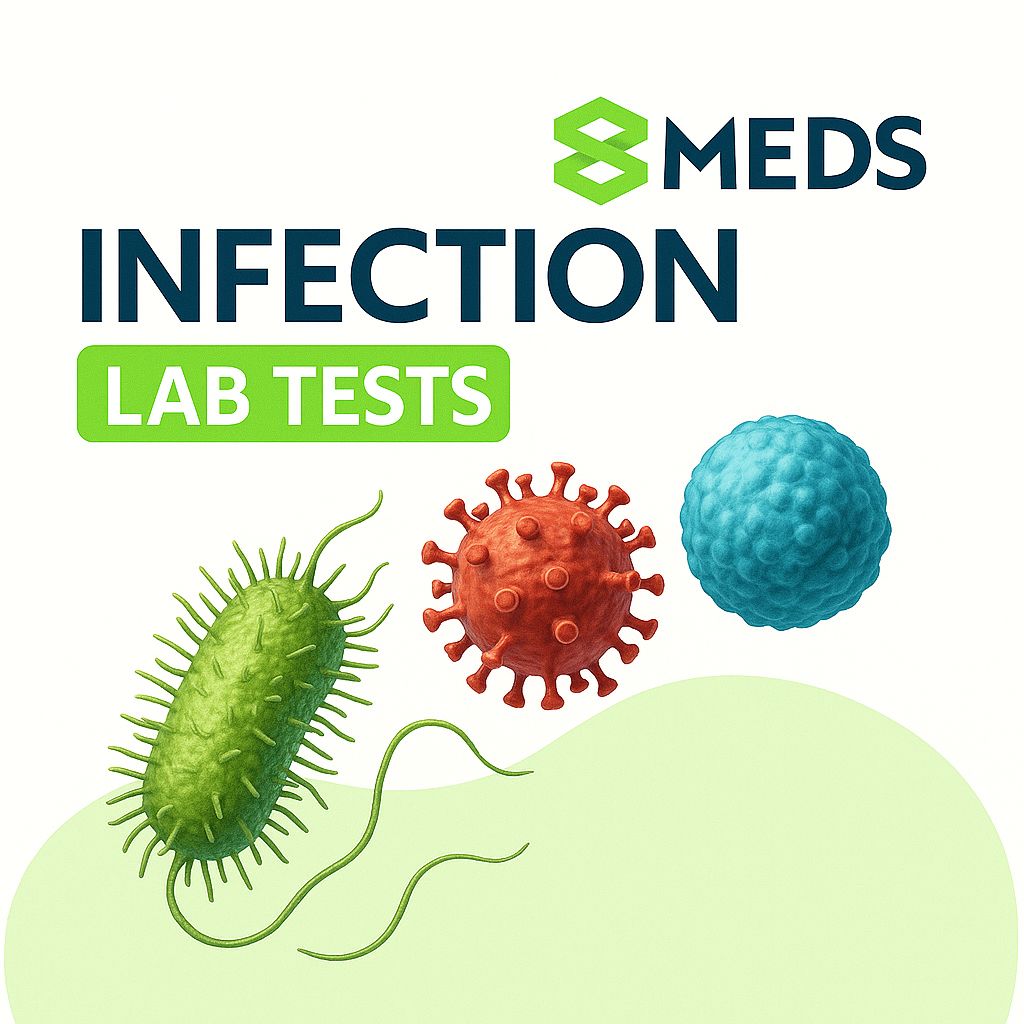
INFECTION SCREENING Lab Tests
Our Infection Screening lab test help detect common bacterial, viral, and parasitic infections early. Tests include typhoid, malaria, hepatitis, HIV, and more. Ideal for those with fever, fatigue, or suspected exposure. Home sample collection available with reports in just 12–24 hours. Accurate, affordable, and NABL-certified.
H1N1 refers to a subtype of the Influenza A virus, commonly known for causing flu infections in humans and animals. Here's a breakdown of the key facts: 🦠 What is H1N1? Full name: Influenza A virus subtype H1N1 "H" and "N" stand for hemagglutinin (H) and neuraminidase (N), two proteins on the virus surface. There are several types of each — H1 and N1 are just one combination. It's one of the subtypes responsible for seasonal flu outbreaks and has also caused pandemics. 🧬 Major Strains & History 1. 1918 Spanish Flu (H1N1) One of the deadliest pandemics in human history. Estimated to have killed 50–100 million people worldwide. 2. 2009 Swine Flu Pandemic Caused by a new strain of H1N1 originating from pigs, birds, and humans. Declared a pandemic by the WHO in June 2009. It was less deadly than initially feared but highly contagious. 😷 Symptoms H1N1 symptoms are similar to those of seasonal flu: Fever Cough Sore throat Body aches Fatigue Sometimes vomiting or diarrhea 💉 Treatment and Prevention Vaccines: Annual flu vaccines usually include protection against H1N1. Antiviral medications: Oseltamivir (Tamiflu) and zanamivir (Relenza) may be prescribed. Prevention: Hand washing, avoiding sick contacts, and vaccination are key. 🐖 Zoonotic Origins The 2009 H1N1 strain originated in pigs (hence "swine flu") but adapted to humans. Influenza viruses can reassort (mix genes) across species, making them unpredictable.
₹1
🦠 H3N2 — Influenza A Virus (Subtype H3N2) H3N2 is a subtype of Influenza A virus, one of the main viruses responsible for seasonal flu outbreaks in humans. It is named based on its surface proteins: H = Hemagglutinin type 3 N = Neuraminidase type 2 🧬 Key Facts About H3N2: Influenza A virus, subtype H3N2 First appeared in humans in 1968 (the “Hong Kong flu” pandemic) Mutates rapidly, which is why flu vaccines are updated annually Known for causing more severe illness than other flu subtypes, especially in: Elderly adults Young children People with chronic illnesses 🧪 How It's Diagnosed: PCR testing (nasal or throat swab) Rapid influenza diagnostic tests (RIDTs) — less sensitive Respiratory viral panels often specify H1N1 vs H3N2 🤒 Symptoms of H3N2 Flu: Like other flu viruses, H3N2 causes: High fever Cough, sore throat Muscle aches Headache Fatigue Occasionally nausea or diarrhea (especially in children) 💉 Vaccination & Treatment: Annual flu vaccine often includes protection against H3N2 But effectiveness varies year to year due to antigenic drift (small mutations) Antiviral medications (if started early): Oseltamivir (Tamiflu) Zanamivir (Relenza) Baloxavir (Xofluza) 🛡️ Prevention: Annual flu vaccination Hand hygiene Avoid close contact with sick individuals Stay home when ill 🌍 Public Health Impact: H3N2 seasons are often more severe than H1N1 or Influenza B seasons Associated with higher rates of: Hospitalization Pneumonia Death in high-risk groups
₹1